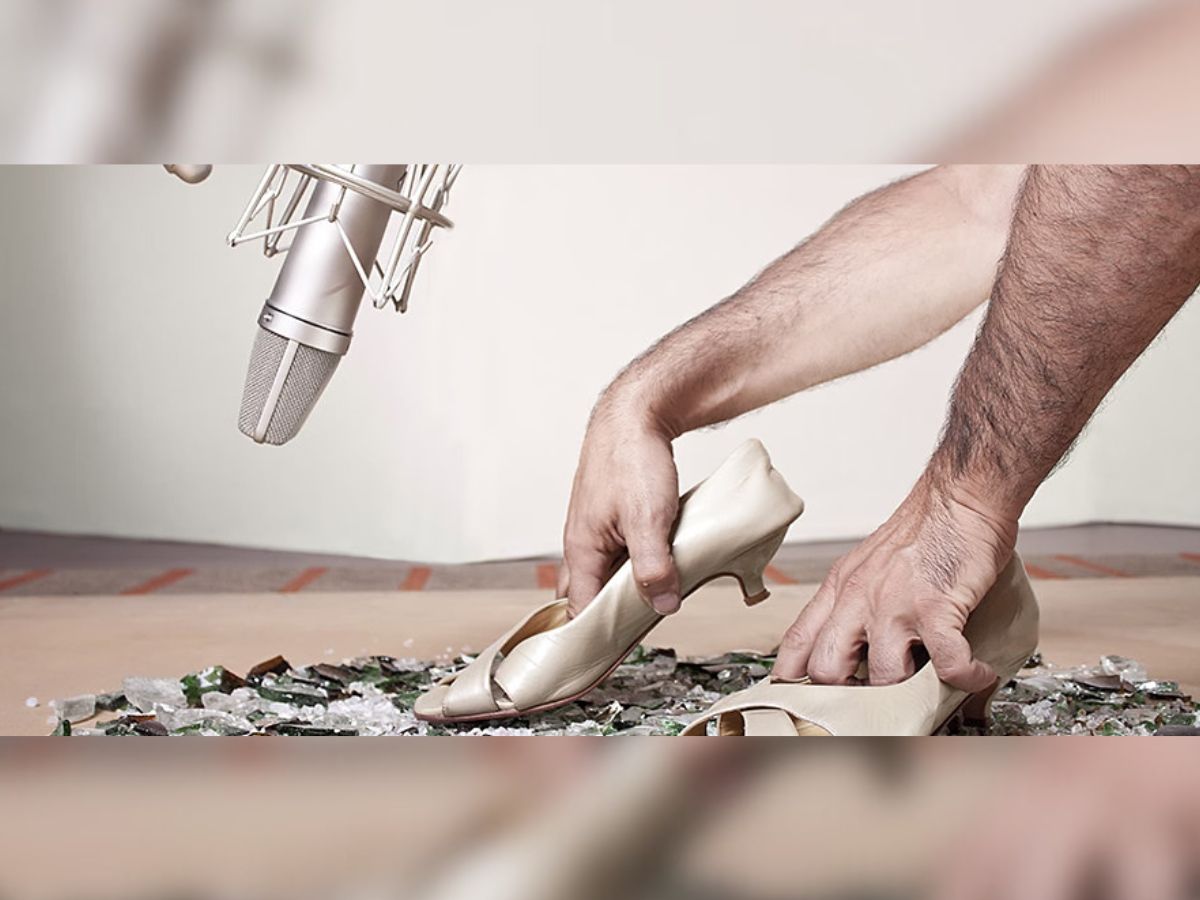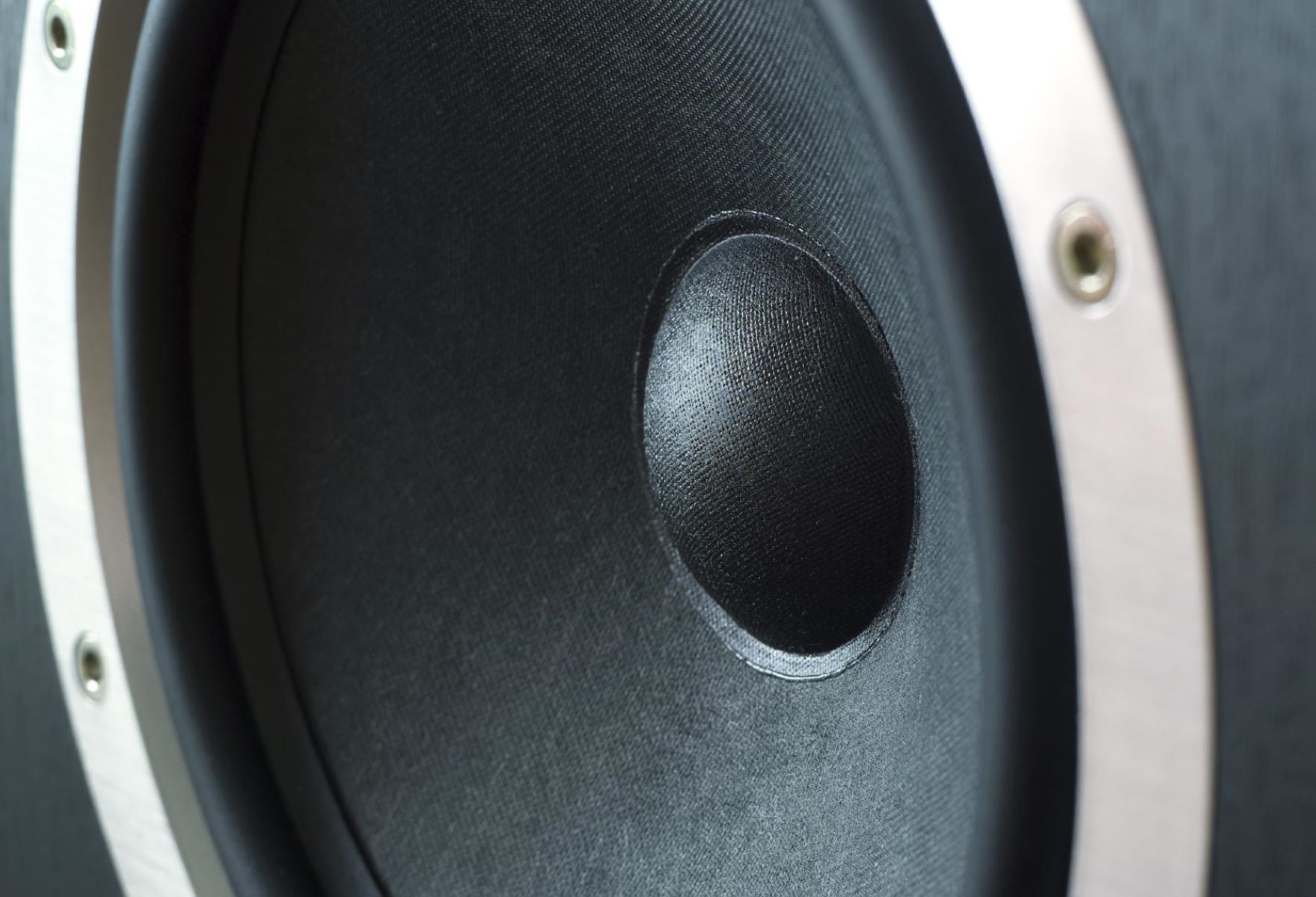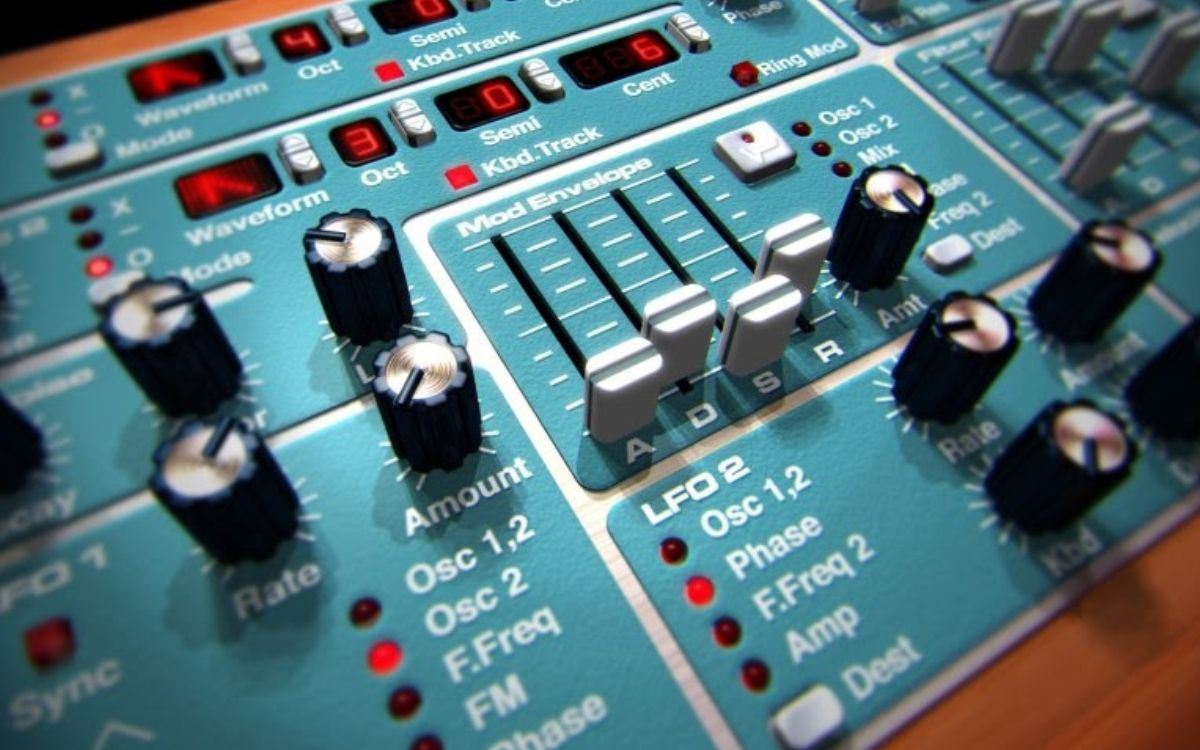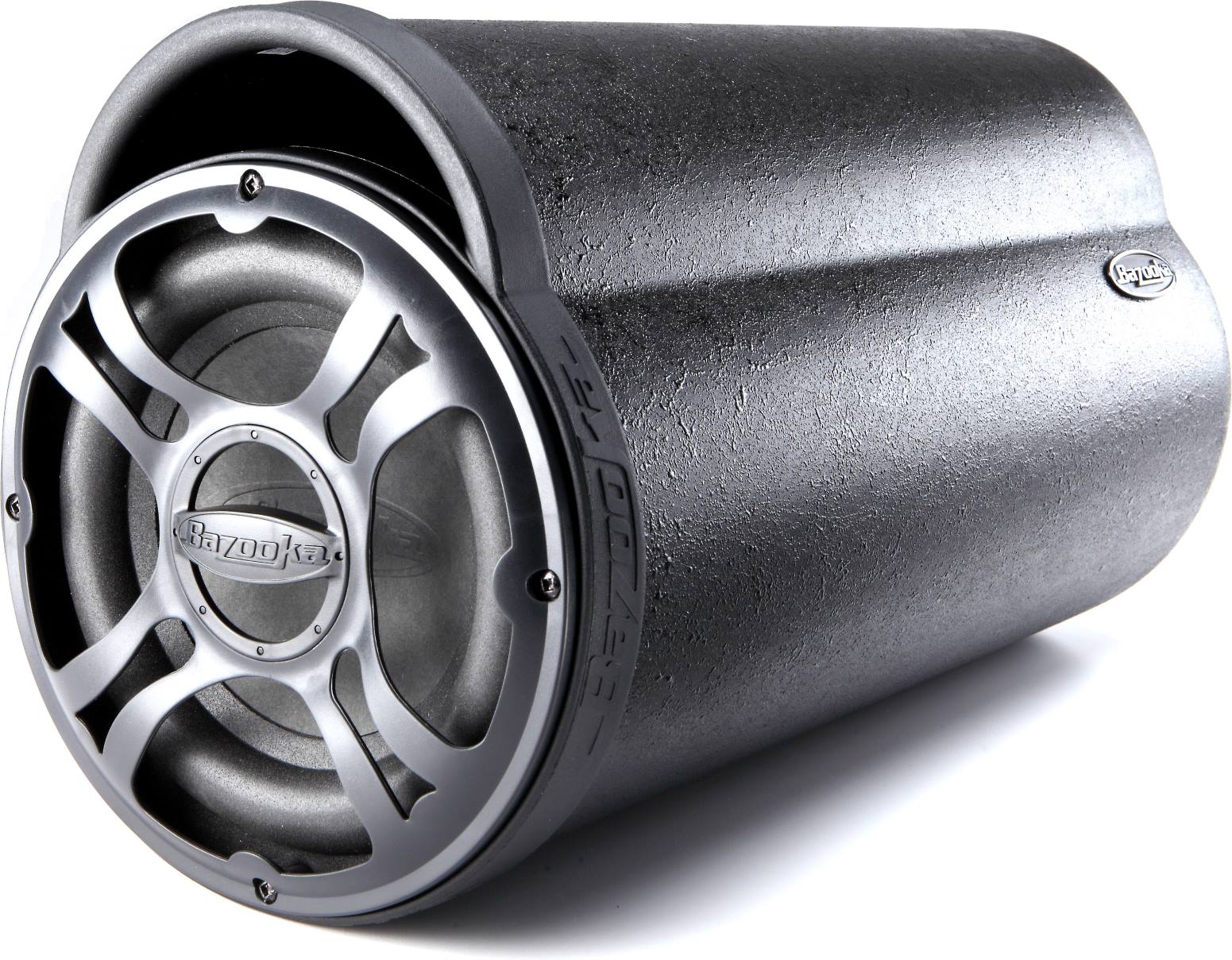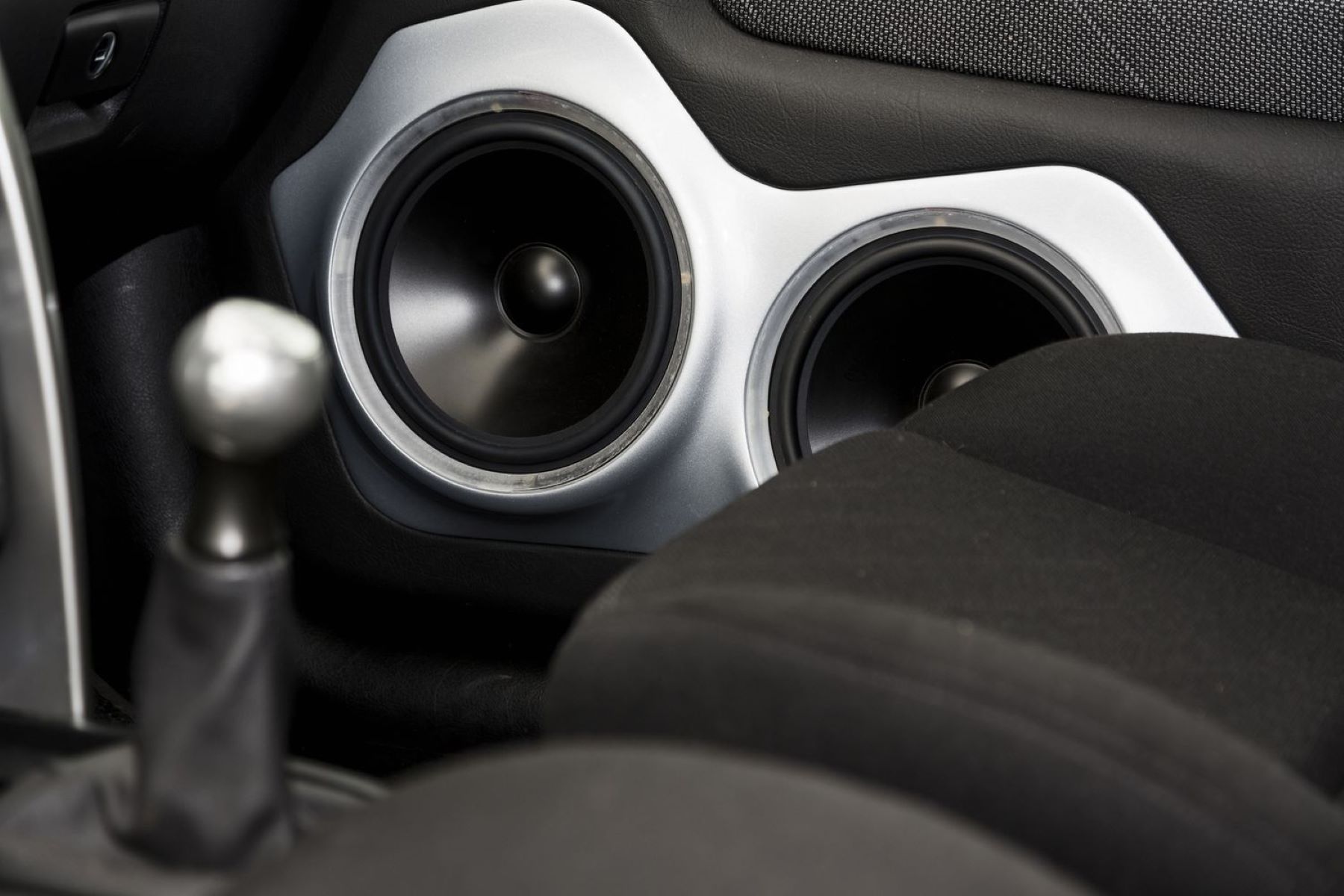Home>Devices & Equipment>Subwoofer>Why Does Subwoofer Make A Popping Noise
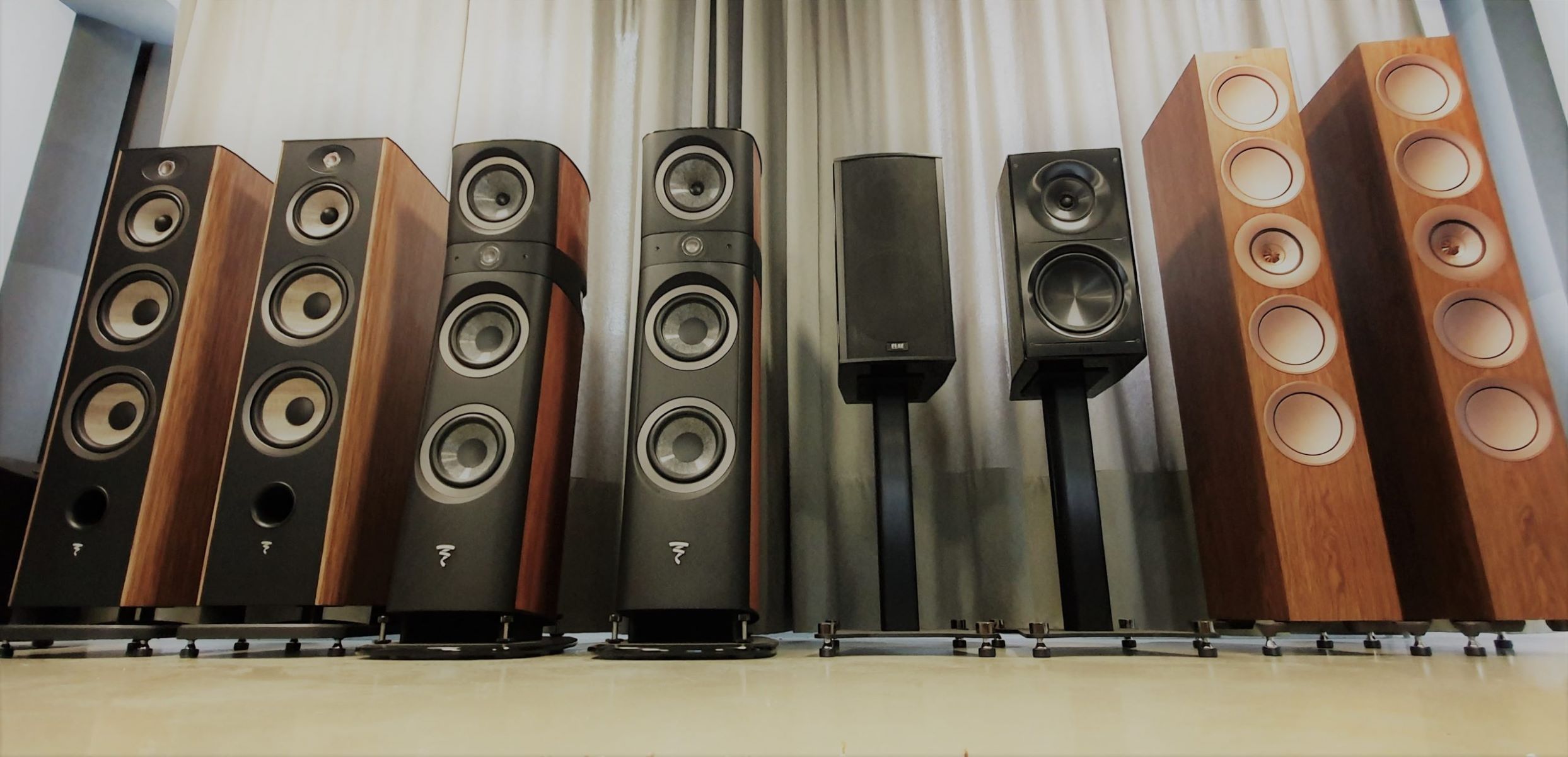

Subwoofer
Why Does Subwoofer Make A Popping Noise
Published: January 21, 2024
Discover why your subwoofer is making a popping noise and learn how to fix it. Expert tips and troubleshooting for a better audio experience.
(Many of the links in this article redirect to a specific reviewed product. Your purchase of these products through affiliate links helps to generate commission for AudioLover.com, at no extra cost. Learn more)
Table of Contents
- Introduction
- What is a Subwoofer?
- Causes of Popping Noise in Subwoofers
- Power Surges
- Loose Connections
- Amplifier Clipping
- Incorrect Phase Settings
- Overheating
- Faulty or Damaged Speaker Components
- How to Fix the Popping Noise in Subwoofers
- Check Power and Ground Connections
- Ensure Proper Amplifier Settings
- Verify Phase Settings
- Monitor and Control Temperature
- Inspect and Replace Faulty Speaker Components
- Conclusion
Introduction
Subwoofers are an essential component of any audio system, providing deep and powerful bass that enhances the overall listening experience. However, there can be instances where subwoofers produce a popping noise that can be quite annoying and disruptive to the audio enjoyment. To fully understand and fix this issue, it is important to delve into the causes and solutions of subwoofer popping noises.
In this article, we will explore the various factors that can lead to subwoofer popping noises and provide practical solutions to address them. Whether you are a passionate audiophile or simply looking to optimize your home theater system, this guide will help you overcome the frustration of unwanted popping sounds.
From power surges to loose connections and amplifier clipping, multiple factors can contribute to subwoofer popping noises. By identifying and addressing these issues, you can restore the optimal performance of your subwoofer and enjoy smooth and immersive bass reproduction.
In the following sections, we will discuss each of these causes in detail and provide step-by-step instructions on how to fix the popping noise in your subwoofer. It is important to note that while some of the solutions might be easily resolved by users themselves, others might require the assistance of a professional technician.
So, if you are ready to eliminate those annoying popping noises and restore the crisp and impactful bass in your audio system, let’s dive into the world of subwoofers and unravel the secrets behind their popping sounds!
What is a Subwoofer?
A subwoofer is a specialized loudspeaker designed to reproduce low-frequency sounds, typically in the range of 20 to 200 Hz. It is responsible for delivering the deep bass that adds depth and impact to music, movies, and other audio content. Unlike regular speakers, subwoofers focus on producing the lower end of the audio spectrum, enhancing the low-frequency response and creating a more immersive listening experience.
Subwoofers come in various sizes and configurations, including standalone units and those integrated into a larger speaker system. Standalone subwoofers are typically larger and more powerful, often requiring their own power source and amplifier. On the other hand, integrated subwoofers are built into speakers or audio systems, allowing for a more compact and streamlined setup.
The key element that sets subwoofers apart from other speakers is their ability to reproduce low-frequency sounds with precision and power. They are specifically designed to handle the demanding bass frequencies that regular speakers may struggle to reproduce accurately.
Subwoofers consist of a speaker driver and an enclosure. The speaker driver, also known as the “woofer,” is responsible for converting electrical signals into sound waves. The enclosure helps to optimize the performance of the speaker driver by controlling air movement and minimizing distortion.
When incorporated into an audio system, subwoofers can greatly enhance the overall sound quality, particularly in genres such as hip-hop, electronic music, and action-packed movies with explosive sound effects. They add richness and depth to the audio, allowing you to feel the rumble of explosions, the thumping beats of bass-heavy tracks, and the low-frequency intricacies of musical instruments.
Overall, subwoofers play a vital role in reproducing low-frequency sounds accurately and powerfully, complementing the performance of regular speakers to deliver a well-rounded audio experience. Understanding the purpose and capabilities of a subwoofer is crucial when troubleshooting issues such as popping noises, as it helps in identifying the potential causes and implementing the appropriate solutions.
Causes of Popping Noise in Subwoofers
Subwoofers are complex audio devices with many components that can contribute to the production of popping noises. Identifying the specific cause of the popping noise is essential for effectively troubleshooting and resolving the issue. Here are some common causes:
- Power Surges: Power surges or fluctuations in the electrical supply can cause subwoofers to produce popping noises. These surges can potentially damage the internal components of the subwoofer or create distortions in the audio signal.
- Loose Connections: A loose or faulty connection between the subwoofer and the audio source, amplifier, or power supply can lead to intermittent popping noises. It is important to ensure that all cables and connections are securely plugged in and properly seated.
- Amplifier Clipping: If the amplifier powering the subwoofer is driven beyond its maximum capacity, it can enter into a state known as clipping. This can result in distorted audio signals, including popping noises. Adjusting the amplifier settings or reducing the volume levels can help alleviate this issue.
- Incorrect Phase Settings: The phase setting on the subwoofer or the audio system may be misaligned, causing interference and resulting in popping noises. Ensuring that the phase is correctly set can help eliminate this problem.
- Overheating: Subwoofers can generate significant heat during operation. If the subwoofer becomes too hot, it can introduce distortions in the audio signal, leading to popping noises. Proper ventilation and avoiding excessive volume levels for extended periods can minimize overheating.
- Faulty or Damaged Speaker Components: Defective or damaged speaker components, such as the woofer cone or voice coil, can result in popping noises. These issues may require professional inspection and replacement to restore proper functionality.
It is important to note that these causes are not exhaustive, and there may be other factors contributing to the popping noise in a subwoofer. Additionally, some popping noises may also occur due to the nature of the audio material being played, such as sudden bass drops or sharp sound effects in movies or music tracks.
In the next section, we will discuss various solutions to address these causes and fix the popping noise in subwoofers, allowing you to enjoy uninterrupted, high-quality bass reproduction.
Power Surges
Power surges can occur when there are sudden spikes or fluctuations in the electrical supply, potentially leading to popping noises in subwoofers. These surges can be caused by various factors, including lightning strikes, faulty wiring, or other electronic devices drawing excessive power from the same circuit.
To protect your subwoofer from power surges, consider implementing the following measures:
- Use a Surge Protector: Connect your subwoofer to a reliable surge protector that includes dedicated outlets for audio equipment. Surge protectors are designed to absorb excessive voltage and redirect it safely away from your devices, minimizing the risk of damage caused by power surges.
- Unplug During Electrical Storms: During thunderstorms, it is advisable to unplug your subwoofer, along with other sensitive electronics, to avoid potential damage from lightning strikes or power fluctuations.
- Check and Upgrade Wiring: Faulty or outdated electrical wiring can increase the risk of power surges. If you suspect your home’s wiring is causing frequent surges, consult a qualified electrician to assess the situation and make any necessary upgrades or repairs.
- Use Ground Fault Circuit Interrupter (GFCI) Outlets: GFCI outlets are specifically designed to protect against electrical shock and can help prevent power surges. Consider using GFCI outlets in areas where your subwoofer is installed.
- Separate Power Sources: To minimize the risk of power surges caused by other devices on the same circuit, try to connect your subwoofer to a dedicated power source or use separate outlets for the subwoofer and other high-power devices.
By taking these precautions, you can protect your subwoofer from power surges and reduce the chances of experiencing popping noises caused by electrical fluctuations. However, it’s important to remember that power surges are external factors that may not be completely preventable, so using a surge protector remains an essential safeguard for your audio equipment.
Loose Connections
Loose or faulty connections are a common cause of popping noises in subwoofers. When the connections between the subwoofer and the audio source, amplifier, or power supply are not secure, it can result in intermittent disruptions in the audio signal.
To address the issue of loose connections and eliminate popping noises, follow these steps:
- Check All Cable Connections: Ensure that all cables connecting the subwoofer to the audio source and amplifier are securely plugged in. Inspect both ends of the cable for any signs of damage or wear. If necessary, replace the cables with new ones.
- Tighten Connections: Verify that all connections at the back of the subwoofer, including power cables, speaker wires, and audio cables, are tightly secured. Use caution when tightening connections to avoid damaging the ports or connectors.
- Test with Different Cables: Sometimes, the issue may lie with a faulty cable. Try swapping out the cables with known working ones to see if the popping noise persists. If the popping noise disappears, it indicates that the previous cable was the source of the problem.
- Confirm Proper Cable Types: Ensure that you are using the correct cables for your setup. Using incompatible cables or adapters can affect the quality of the connections and introduce unwanted noise. Refer to the user manual or consult with the manufacturer for the recommended cable types.
- Consider Using Shielded Cables: Shielded cables can help minimize interference from other electronic devices and reduce the chances of audio signal disruptions. Using shielded cables for the subwoofer connections can help maintain a cleaner audio signal and reduce the likelihood of popping noises.
By thoroughly inspecting and tightening all the connections, and using high-quality cables, you can greatly reduce the occurrence of popping noises in your subwoofer. If the issue persists, it may be necessary to consult with a professional technician or contact the manufacturer for further assistance.
Amplifier Clipping
Amplifier clipping is a common cause of popping noises in subwoofers, particularly when the amplifier is pushed beyond its maximum capacity. Clipping occurs when the amplifier is unable to accurately reproduce the audio signal, resulting in distortion and audible pops or crackles.
To address amplifier clipping and eliminate popping noises, consider the following steps:
- Adjust the Volume: Lower the volume level on your audio system or receiver to a point where the popping noises disappear. By reducing the volume, you can ensure that the amplifier is not being pushed beyond its limits, helping to prevent clipping and distortion.
- Check the Gain Setting: Ensure that the gain (or volume) setting on the amplifier or subwoofer is properly adjusted. Setting the gain too high can lead to clipping, while setting it too low can result in an underpowered audio signal. Consult the amplifier’s user manual for guidance on setting the gain correctly.
- Use a Dedicated Subwoofer Amplifier: Consider using a dedicated amplifier specifically designed for subwoofers. These amplifiers often have built-in features and settings to optimize the output and prevent clipping. Dedicated subwoofer amplifiers typically provide more power and better control over bass frequencies.
- Upgrade Your Amplifier: If you find that your current amplifier is consistently causing clipping and producing popping noises, it may be worth considering upgrading to a more powerful or higher-quality amplifier. A better amplifier will be better able to handle the demands of your subwoofer system without distorting the audio signal.
- Consult with an Audio Professional: If you are unsure about how to properly adjust settings or upgrade your amplifier, it is recommended to consult with an audio professional. They can assess your specific setup and provide expert advice on optimizing your amplifier settings to prevent clipping and popping noises.
By properly adjusting the volume and gain settings, using dedicated subwoofer amplifiers, and potentially upgrading your amplifier, you can minimize the risk of clipping and eliminate popping noises in your subwoofer. Remember, it is important to find the right balance between achieving the desired audio output and ensuring that the amplifier is not being overloaded.
Incorrect Phase Settings
Incorrect phase settings can contribute to popping noises in subwoofers. The phase setting determines the alignment of the subwoofer’s audio signal with the audio signal from other speakers in the system. When the phase is misaligned, it can result in interference and inconsistencies in the audio playback, leading to popping noises.
To address incorrect phase settings and eliminate popping noises, follow these steps:
- Check the Phase Control: Locate the phase control knob or switch on the subwoofer or audio system. It is usually labeled as “Phase” or “Phase Control.” Ensure that it is set to the proper position, typically either 0 or 180 degrees.
- Experiment with Different Phase Settings: In some cases, the ideal phase setting may not be immediately apparent. Experiment with different phase settings to determine which configuration produces the cleanest and most accurate bass reproduction. Listen for any reduction in popping noises as you make adjustments.
- Use a Subwoofer Calibration Tool: Consider using a subwoofer calibration tool or an audio setup program that can automatically adjust the phase settings for optimal audio performance. These tools can analyze your specific audio setup and make precise phase adjustments for you.
- Consult the User Manual: If you are unsure about the proper phase settings for your subwoofer, refer to the user manual or contact the manufacturer for guidance. The manual may provide specific recommendations based on your subwoofer model and the audio system you are using.
- Ensure Consistent Phase Across Multiple Subwoofers: If you have multiple subwoofers in your audio system, it is important to ensure that the phase settings are consistent across all subwoofers. Inconsistent phase settings between subwoofers can lead to destructive interference and popping noises.
By verifying and adjusting the phase settings of your subwoofer, you can eliminate interference and synchronization issues that contribute to popping noises. Finding the optimal phase setting will help in achieving a smoother and more cohesive bass response, enhancing your overall listening experience.
Overheating
Overheating can be a common cause of popping noises in subwoofers. When a subwoofer operates for extended periods or in environments with inadequate ventilation, it can generate excessive heat. This excessive heat can lead to distortion in the audio signal and result in popping noises.
To address overheating issues and prevent popping noises, consider the following steps:
- Ensure Proper Ventilation: Check the placement of your subwoofer and ensure that it has sufficient ventilation around it. Avoid placing the subwoofer in enclosed spaces or close to walls or other heat-generating devices that can impede airflow.
- Reduce Extended Use: Limit the operating time of your subwoofer, especially at high volume levels, to prevent overheating. Take breaks between extended listening sessions to allow the subwoofer to cool down.
- Monitor Temperature: Some subwoofers may have built-in temperature sensors or indicators to monitor the operating temperature. Keep an eye on these indicators and if they indicate excessive heat, take steps to cool down the subwoofer or reduce the volume level.
- Implement Cooling Solutions: If your subwoofer consistently runs hot, consider using additional cooling solutions such as external fans or cooling pads. These can help dissipate heat and maintain a stable operating temperature.
- Properly Adjust Bass Level: Excessive bass levels can put additional strain on the subwoofer and contribute to overheating. Ensure that the bass levels are set to a reasonable level that is appropriate for the room and the speaker system’s capabilities.
By providing adequate ventilation, monitoring the operating temperature, and avoiding prolonged high-volume usage, you can minimize the risk of overheating in your subwoofer. Taking these preventive measures will help maintain optimal performance and reduce the occurrence of popping noises caused by heat-induced distortions in the audio signal.
Faulty or Damaged Speaker Components
Faulty or damaged speaker components can be a significant contributor to popping noises in subwoofers. Issues such as a damaged woofer cone, voice coil, or other internal components can result in distorted audio signals, leading to popping noises.
To address these issues and eliminate popping noises, consider the following steps:
- Inspect the Speaker Components: Carefully examine the woofer cone, voice coil, and other speaker components for any visible signs of damage, such as tears, dents, or loose connections. If you notice any physical damage, it is likely that the component needs to be repaired or replaced.
- Check for Loose Connections: Verify that all connections within the speaker, including the terminals and wiring, are securely fastened. Loose connections can introduce interference and affect the overall performance of the speaker, resulting in popping noises. Tighten any loose connections as necessary.
- Listen for Distorted Audio: Pay attention to any other signs of audio distortion, such as rattling or buzzing sounds, in addition to the popping noises. This can help determine if the issue is confined to specific speaker components or if there are broader problems with the subwoofer.
- Consult with a Professional: If you are unsure about the extent of the damage or are not comfortable performing repairs yourself, it is recommended to consult with a professional audio technician or contact the manufacturer for assistance. They can diagnose the issue and provide guidance on repairing or replacing the faulty speaker components.
- Consider Replacing the Speaker: In some cases, the damage to the speaker components may be irreparable or too costly to fix. If this is the case, it might be more practical to replace the entire speaker unit. Consult with experts or the manufacturer to find a suitable replacement.
Addressing faulty or damaged speaker components requires careful inspection and, in some cases, professional assistance. By identifying and resolving issues with the speaker components, you can restore the subwoofer’s optimal performance and eliminate popping noises caused by damaged internal components.
How to Fix the Popping Noise in Subwoofers
Experiencing popping noises in your subwoofer can be frustrating, but fortunately, there are several steps you can take to address and resolve the issue. By following these troubleshooting methods, you can eliminate popping noises and restore the clarity and depth of bass in your audio system.
- Check Power and Ground Connections: Ensure that all power and ground connections are secure and properly connected. Loose or faulty connections can introduce electrical noise and result in popping noises. Reconnect or tighten any loose connections as necessary.
- Ensure Proper Amplifier Settings: Verify that your amplifier settings, including gain and volume levels, are properly calibrated. Adjust the settings to ensure the amplifier is not being pushed beyond its capacity, which can lead to clipping and popping noises.
- Verify Phase Settings: Check the phase setting on your subwoofer or audio system and ensure it is correctly aligned. Misaligned phase settings can cause interference and introduce popping noises. Adjust the phase setting to the recommended position or experiment to find the optimal setting.
- Monitor and Control Temperature: Keep an eye on the operating temperature of the subwoofer. Ensure it is not overheating by providing adequate ventilation and avoiding prolonged high-volume use. Consider using additional cooling solutions if necessary.
- Inspect and Replace Faulty Speaker Components: Regularly inspect the speaker components for any signs of damage, such as tears, dents, or loose connections. If you identify damaged components, consult with a professional technician or the manufacturer to determine the best course of action, whether it be repair or replacement.
It’s important to note that each subwoofer system may have specific characteristics and requirements. Therefore, it’s recommended to consult the user manual or contact the manufacturer for detailed instructions and troubleshooting specific to your particular subwoofer model.
By implementing these troubleshooting methods, you can effectively address popping noises in your subwoofer and optimize its performance. Enjoy a clean, powerful bass experience without any interruptions and immerse yourself in the rich soundscapes of your favorite music, movies, and more.
Check Power and Ground Connections
One of the first steps in troubleshooting popping noises in subwoofers is to check the power and ground connections. Loose or faulty connections can introduce electrical noise into the system, resulting in unwanted popping sounds. To address this issue, follow these steps:
- Inspect Power Connections: Check the power cord connected to the subwoofer and ensure it is securely plugged into a functioning power outlet. Examine the power cord for any signs of damage such as frayed wires or bent connectors. If there are any issues, replace the power cord with a new one.
- Verify Ground Connections: Ensure that the subwoofer is properly grounded. Check the ground wire connection on the back of the subwoofer and make sure it is securely attached. Additionally, ensure that the other end of the ground wire is properly grounded, typically to a metal part of the audio system or electrical grounding point.
- Consider Using a Dedicated Power Outlet: Plug the subwoofer into a dedicated power outlet, ideally on a separate circuit from other electrical devices. Sharing an outlet with other high-powered electronics can cause electrical interference, resulting in popping noises. Using a separate outlet can help minimize this interference.
- Eliminate Electrical Interference: Keep electrical cables, such as power or HDMI cables, away from the audio signal cables. Electrical interference from adjacent cables can introduce noise into the audio signal, leading to popping noises. Make sure to route and separate cables as best as possible to minimize interference.
- Use Quality Power Conditioners or Surge Protectors: Consider using power conditioners or surge protectors with built-in noise filtration features. These devices can help reduce electrical noise and protect your subwoofer from spikes in the electrical supply, minimizing the chances of popping noises due to electrical issues.
By thoroughly inspecting and ensuring proper power and ground connections, you can eliminate potential sources of electrical interference that cause popping noises in subwoofers. A clean and stable power supply is crucial for the optimal performance of your subwoofer, allowing you to enjoy distortion-free bass reproduction.
Ensure Proper Amplifier Settings
Another important step in addressing popping noises in subwoofers is to ensure that the amplifier settings are properly calibrated. Incorrect amplifier settings can lead to distortion and clipping, resulting in the unwanted popping sounds. To optimize the amplifier settings and eliminate popping noises, follow these steps:
- Adjust the Gain Control: Locate the gain control knob or setting on your amplifier or subwoofer and ensure it is set to the appropriate level. The gain control determines the input sensitivity of the amplifier. Setting it too high can cause the amplifier to overload and introduce distortion, including popping noises. Adjust the gain control to a level that allows for clear and distortion-free audio.
- Review Volume Levels: Check the volume levels on both the audio source and the amplifier. Make sure they are properly balanced and not set too high. Excessively high volume levels can cause the amplifier to clip, resulting in distorted audio and popping noises. Adjust the volume levels to a comfortable and appropriate listening level.
- Consider Using a Low Pass Filter: A low pass filter is a feature available on many subwoofer amplifiers that allows you to set a specific frequency range for the subwoofer. This filter helps prevent the subwoofer from reproducing frequencies that are better suited for the main speakers, reducing the chances of distortion and popping noises. Adjust the low pass filter settings according to your audio system’s specifications and room acoustics.
- Refer to the User Manual: Consult the user manual provided by the amplifier manufacturer for specific instructions on calibrating the amplifier settings. The manual may include recommended settings or guidelines based on your specific amplifier model. Following the manufacturer’s recommendations can help achieve optimal audio performance and minimize the occurrence of popping noises.
- Consider Upgrading Your Amplifier: If you continually experience issues with popping noises even after adjusting the amplifier settings, it may be worth considering upgrading to a more powerful or higher-quality amplifier. A better amplifier can provide improved control over the audio signal and prevent distortion, resulting in cleaner and more accurate bass reproduction.
By ensuring proper amplifier settings, you can eliminate distortion and clipping that lead to popping noises in your subwoofer. Achieving the right balance between input sensitivity, volume levels, and using additional features like low pass filters will help optimize the audio performance and ensure a smooth and enjoyable bass experience.
Verify Phase Settings
Checking and verifying the phase settings of your subwoofer is crucial in eliminating popping noises and achieving optimal audio performance. The phase setting determines the alignment of the subwoofer’s audio signal with the audio signals from other speakers in the system. When the phase is misaligned, it can lead to interference and inconsistencies in the audio playback, causing popping noises. To address this issue, follow these steps:
- Locate the Phase Control: Identify the phase control knob or switch on your subwoofer or audio system. This control is typically labeled as “Phase” or “Phase Control.”
- Set the Phase to 0 Degrees or 180 Degrees: The recommended phase setting is typically either 0 degrees or 180 degrees, depending on various factors such as the positioning of the subwoofer and the main speakers in the room. Experiment with both settings to find the one that produces the best bass response and minimizes popping noises.
- Experiment with Different Phase Settings: In some cases, the ideal phase setting may not follow the conventional 0 or 180 degrees. Depending on your specific room acoustics and speaker positioning, you may need to experiment to find the optimal phase setting. Gradually adjust the phase control and listen for any reduction in popping noises. Trust your ears to guide you to the best sound quality.
- Consider Subwoofer Calibration Tools: Utilize subwoofer calibration tools or audio setup programs that can automatically adjust the phase settings for optimal audio performance. These tools analyze your specific audio setup and make precise phase adjustments, taking into account room acoustics and speaker positioning. They can help eliminate guesswork and ensure accurate phase alignment.
- Refer to the User Manual: Consult the user manual provided by the subwoofer or audio system manufacturer for specific instructions on setting the phase. The manual may provide recommendations based on your specific equipment model and environmental factors. Following the guidelines outlined in the manual can help achieve the best phase alignment and reduce popping noises.
By verifying and adjusting the phase settings of your subwoofer, you can eliminate interference and synchronization issues that can contribute to popping noises. Finding the optimal phase setting will help in achieving a smooth and cohesive bass response, enhancing your overall listening experience.
Monitor and Control Temperature
Monitoring and controlling the temperature of your subwoofer is essential in preventing overheating, which can lead to popping noises. Subwoofers generate heat during operation, especially when played at high volumes or for extended periods. Excessive heat can cause distortion in the audio signal and result in unwanted popping noises. To address this issue, follow these steps:
- Ensure Proper Ventilation: Check the placement of your subwoofer and ensure it has adequate ventilation. Avoid placing it in enclosed spaces or near heat-generating devices that can impede airflow. Allow for proper airflow around the subwoofer to help dissipate heat.
- Avoid Blocking Cooling Ports: Many subwoofers have cooling ports or vents. Make sure these ports are not blocked by objects or furniture. Blocking the cooling ports restricts airflow and can lead to overheating. Maintain a clear space around the subwoofer’s cooling ports to facilitate efficient heat dissipation.
- Limit High-Volume Usage: Playing your subwoofer at high volumes for an extended period can cause it to generate more heat. To prevent overheating, limit the duration of high-volume usage and take breaks between listening sessions to allow the subwoofer to cool down.
- Use Cooling Solutions: If your subwoofer consistently runs hot, consider using additional cooling solutions to help dissipate heat. External fans, cooling pads, or ventilation systems can be employed to regulate the temperature and prevent overheating. Place them strategically to facilitate proper cooling without introducing additional noise or vibrations.
- Monitor Temperature Indicators: Some subwoofers come equipped with temperature sensors or built-in indicators to monitor the operating temperature. Pay attention to these indicators and take appropriate action if the temperature exceeds safe limits. Adjust the volume, improve ventilation, or consider using cooling solutions to maintain a stable operating temperature.
By ensuring proper ventilation, avoiding blockage of cooling ports, limiting high-volume usage, and using cooling solutions when necessary, you can effectively control the temperature of your subwoofer and minimize the risk of overheating-induced popping noises. Maintaining a stable operating temperature will allow your subwoofer to perform optimally, ensuring distortion-free and uninterrupted bass reproduction.
Inspect and Replace Faulty Speaker Components
If you have tried the previous steps and are still experiencing popping noises in your subwoofer, it is time to inspect and potentially replace any faulty speaker components. Damage to the woofer cone, voice coil, or other internal components can lead to distorted audio signals, resulting in popping noises. To address this issue, follow these steps:
- Conduct a Visual Inspection: Thoroughly examine the speaker components, including the woofer cone, voice coil, and connections, for any visible signs of damage. Look for tears, dents, or other defects that may affect the performance of the subwoofer. If you notice any damage, it is highly likely that the component needs to be repaired or replaced.
- Check for Loose Connections: Inspect all connections within the subwoofer to ensure they are securely fastened. Loose or faulty connections can lead to disruptions in the audio signal and contribute to popping noises. Tighten any loose connections as necessary and retest the subwoofer for any improvements.
- Listen for Audio Distortion: Pay attention to any other signs of audio distortion, such as rattling or buzzing sounds, in addition to the popping noises. These can be indications of a larger problem with the speaker components. If the distortion is consistent and cannot be resolved with other troubleshooting methods, it may be necessary to replace the faulty components.
- Consult with a Professional: If you are uncertain about the extent of the damage or are not comfortable performing repairs yourself, it is recommended to consult with a professional audio technician or contact the manufacturer for assistance. They can accurately assess the speaker components and provide guidance on repairing or replacing any damaged parts.
- Consider Replacement Parts or Speaker Unit: If the speaker components are irreparably damaged or the cost of repair is prohibitively high, consider replacing the damaged parts or the entire speaker unit. Consult with experts or the manufacturer to find suitable replacement components or speakers that are compatible with your subwoofer model.
By inspecting and, if necessary, replacing faulty speaker components, you can restore the optimal performance of your subwoofer and eliminate popping noises caused by internal damage. It is important to address any physical defects promptly to ensure a smooth and enjoyable bass listening experience.
Conclusion
Popping noises in subwoofers can be a frustrating issue that hampers your audio experience. However, by understanding the various causes of these noises and following the appropriate troubleshooting steps, you can effectively eliminate them and restore the clarity and depth of your bass reproduction.
In this article, we explored the common causes of popping noises, including power surges, loose connections, amplifier clipping, incorrect phase settings, overheating, and faulty speaker components. By identifying these factors, you can target the root of the problem and implement the necessary solutions.
We discussed the importance of checking power and ground connections, ensuring proper amplifier settings, verifying phase settings, monitoring and controlling temperature, and inspecting and replacing faulty speaker components. Each of these steps plays a vital role in troubleshooting and resolving popping noise issues in subwoofers.
While these steps can help address most popping noise problems, it’s essential to remember that subwoofers and audio systems can vary in design and configuration. Therefore, it is important to consult the user manual or seek professional assistance when necessary to ensure the best results for your specific equipment.
By applying the appropriate troubleshooting methods and taking preventive measures, you can enhance the overall performance and longevity of your subwoofer system. Enjoy clear, powerful, and distortion-free bass, immersing yourself in a truly captivating audio experience.
Remember, troubleshooting and resolving popping noises require patience and a systematic approach. By following the steps outlined in this article and seeking assistance when needed, you can achieve optimal subwoofer performance and enjoy your audio content to the fullest.



